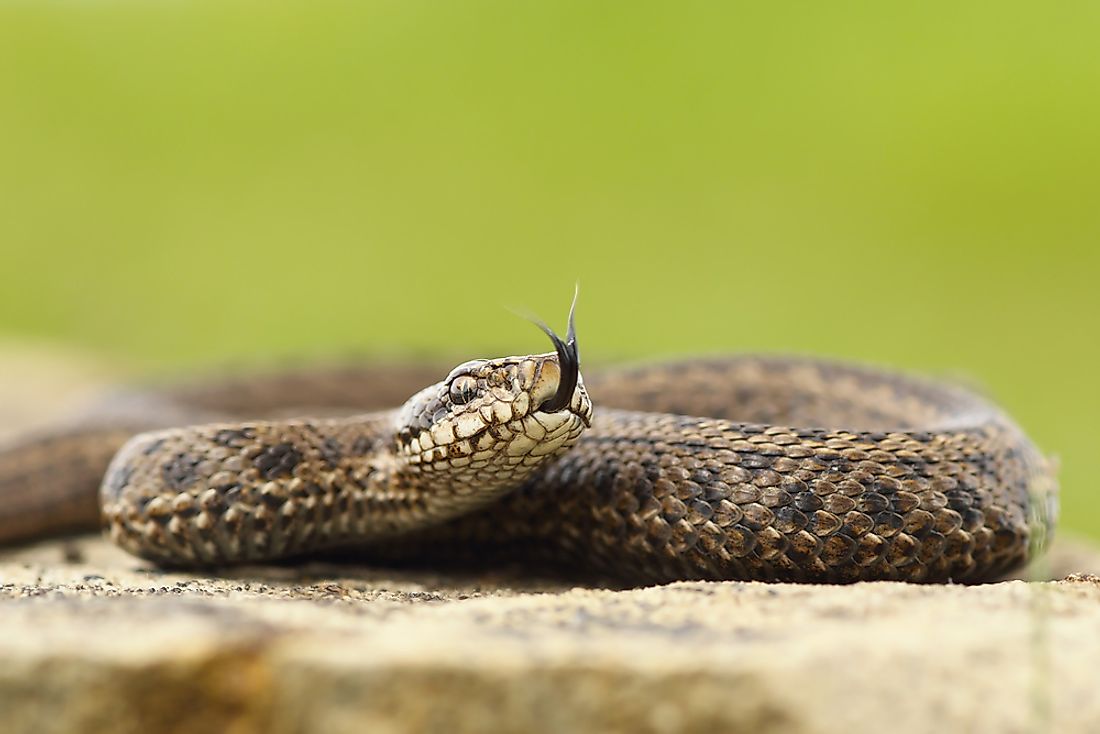Can Snakes Smell?

Snakes generally have poor levels of eyesight (enough to track down the movement of prey and predators, but not enough to trace details and minute movements) and hearing (because they have neither outer ears nor eardrums). Furthermore, because of the scales on their bodies, they have a terrible sense of touch. Instead, mostly in an effort to compensate for what they lack, they have a vastly-heightened sense of smell. They use their noses for respiration purposes, rather than as their primary smelling organs. However, they have organs at the roofs of their mouths called vomeronasal or Jacobson’s (called that after the man who discovered how snakes smell) organs.
How Do Snakes Smell?
The vomeronasal system, together with the snake’s sense of touch, is responsible for how snakes respond to stimuli in their environments. When something moves near a snake, it feels vibrations in the ground. From there, it flicks its tongue in and out of its rostral groove so as to determine whether the creature near it is a predator or prey, foe or ally.
Purpose of a Snake's Tongue
Basically, what snakes do is that they smell things with their regular noses, and if they feel interested enough in the smell to investigate, they flick their tongues in and out of their mouths. On the tips of the forks of the tongues of lizards and snakes are tiny organs called tines that detect certain odors. Interestingly enough, snakes don’t need to open their mouths so that their tongues can flick in and out. There is a grove in its mouth, in its upper lip, called the rostral groove that lets the tongue move in and out. When a snake brings its tongue back into its mouth, the odor molecules travel to the vomeronasal system.
Vomeronasal System
It is important however to note that the tongue doe not really smell or taste, but rather, the tongue merely reads the information in the pheromones and chemicals it picks up from the air, and sends it to the vomeronasal organ to process. The vomeronasal organs then transmit these signals to the chemoreceptive organs in the olfactory bulbs in the snake’s brain which analyze the signals they have received to determine what the particular smell (and taste) is, the direction from which it has been picked up, what has produced the smell, and whether the thing that has produced the smell is either food, or a threat, or of no importance. Additionally, the information they pick up from the smells could be used to find a hiding place, or even by male snakes during mating season to find female mates.
Tongue-Flicking Techniques
There are various tongue-flicking techniques that snakes use to pick up smells: flicking their tongues right to left to right and back as they move forward helps them trace smell trails; flicking them up and down in the air helps the snakes detect air-borne chemicals; oscillating the movement of the tongues improves their accuracy when tracking. In addition, the tongue having two forks rather than being one continuous organ helps the snake determine the direction from which the smell it is detecting is emanating.











